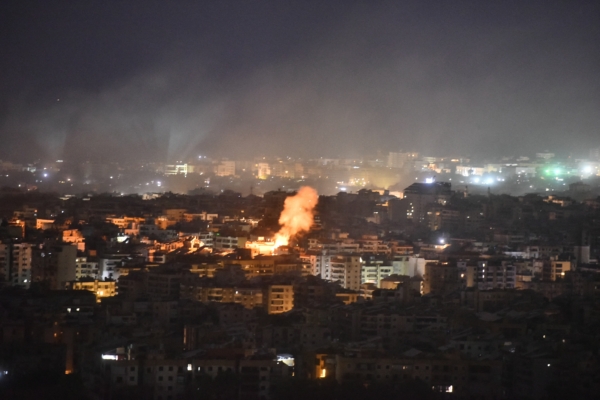On Tuesday, October 1, Israeli ground forces crossed the border into southern Lebanon, marking a significant escalation in Israel’s offensive against Hezbollah and opening up a new front in the year-long Middle East conflict.
Since the start of the Gaza War, Israel and Hezbollah have been engaging in frequent border skirmishes. There have been several instances where a full-blown war seemed imminent, only for both sides to step back from the brink of all-out conflict.
However, with Hamas significantly weakened, Israel has shifted its focus towards Lebanon and intensified its attacks on Hezbollah.
This invasion comes after weeks of intense Israeli attacks on Hezbollah. Prior to this, thousands of Hezbollah communication devices exploded, indicating deep infiltration by Israel. Subsequent airstrikes targeted many high-ranking Hezbollah officials, including long-time leader Hassan Nasrallah.
Despite this, Hezbollah continues to launch rockets and missiles at Israel, with an estimated several thousand fighters believed to be near the Israeli border.
On Tuesday, the Israeli military stated in a brief announcement that they had begun “limited, localized, and targeted ground attacks” on Hezbollah targets in southern Lebanon.
The statement mentioned, “These targets are located in villages near the border, posing a direct threat to Israeli communities in northern Israel.”
Israel did not disclose the duration of the operation but mentioned that soldiers have been training and preparing for this mission for months, with ground forces being supported by the air force and artillery units inside Lebanese territory.
Israel has vowed to continue the fight against Hezbollah until Israeli communities near the border can safely return to their homes.
Currently, there have been no reports of direct clashes between the Israeli military and Hezbollah militants. However, according to reports from the Associated Press, Israeli artillery units conducted intense overnight shelling on targets in southern Lebanon, with explosions audible in the capital, Beirut.
Israel has recently achieved significant victories in its operations against Hezbollah. However, the initiation of ground operations signals a new and more risky phase of the conflict, which could lead to further destruction in Lebanon.
Hezbollah, a well-trained militia group, is believed to possess tens of thousands of fighters, along with 150,000 rockets and missiles.
The last ground war between Israel and Hezbollah occurred in 2006. Over the past two decades, both sides have been preparing for the next confrontation. Hezbollah has built up a substantial arsenal, while Israel has invested heavily in training and intelligence gathering.
Hezbollah stated on Monday that despite recent heavy losses, they are prepared to continue fighting and have readied themselves for ground operations.
Israel has indicated that they hope Hezbollah will adhere to the resolution reached at the end of the 2006 war, which calls for Hezbollah to withdraw approximately 20 miles (about 30 kilometers) from the Israeli border.
Over the years, Israeli leaders have accused Hezbollah of hiding weapons and combatants in civilian homes and other civilian structures in border villages.
Hezbollah lacks significant air defense systems, allowing the Israeli Air Force freedom of movement over Lebanon. However, the challenges of ground operations are much greater, as Hezbollah fighters are concealed within local communities and familiar with the terrain.
Israel is further targeting a series of Iran-backed hostile organizations, raising concerns that intensified attacks on Hezbollah could lead to a broader regional conflict.
This week, Israel also conducted airstrikes on Houthi militants and eliminated a Hamas leader in Lebanon, as well as three leaders from the other radical organization, the Popular Front for the Liberation of Palestine (PFLP).
The United States, France, and many Western countries have called for a ceasefire, hoping to prevent further escalation of the situation.

